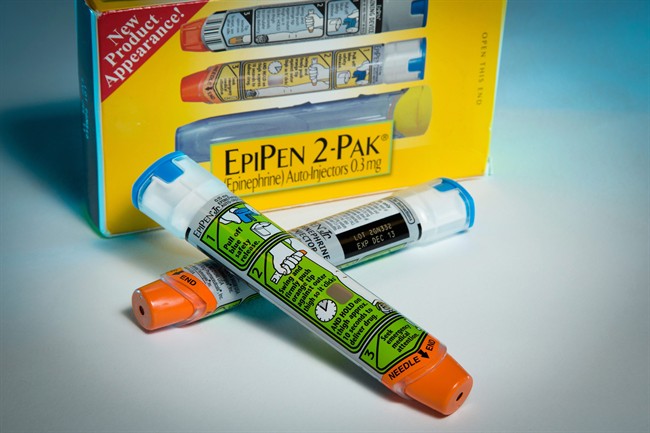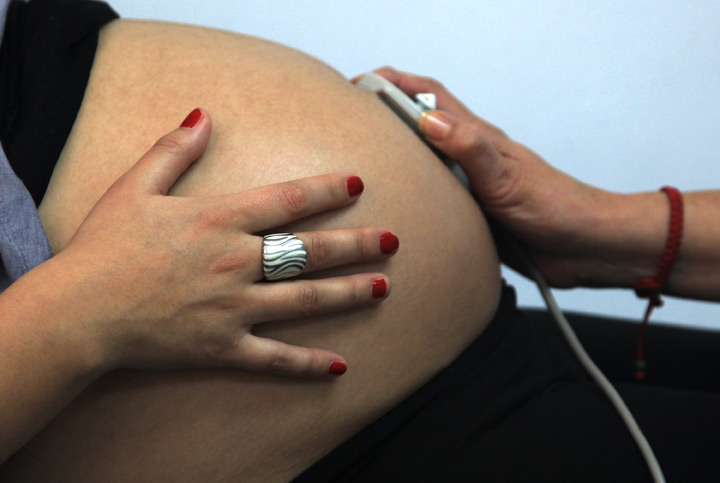TORONTO – Seven-year-old Ontario student Elodie Glover has potentially life-threatening allergies to dairy and egg, and as a result, a dairy ban has been imposed at her Hamilton elementary school.

What do you think about how schools should accommodate children with allergies? Click here to weigh in on the conversation in a 16×9 live chat from 8 p.m.-10 p.m. ET on Saturday October 18.
Severe food allergies in children like Glover are becoming more and more common; allergists suggest prevalence has doubled or tripled in the last ten years.
“Many of them these days also have more than one food allergy,” said Anaphylaxis Canada executive director Laurie Harada. “And to complicate matters even further, there are a lot of kids who have food allergy and also have asthma—which puts them at a higher risk for a severe allergic reaction.”
It’s a worrisome trend that has many wondering why these food allergies are increasing so significantly.
Though there are several hypotheses, McMaster University allergist and clinical immunologist Susan Waserman says at the end of the day, “we really don’t have an answer.”
We’re too clean?
Waserman suggests the most popular explanation is the hygiene hypothesis—which explains the rise in all types of allergy (not just food).
“What that means is that we’re living too cleanly and in living too cleanly, our immune systems have gotten lazy because they no longer have to fight infection as much.”
“So it becomes allergic as opposed to being there to fight infection,” she explained.
Waserman’s McMaster colleague and president of the Canadian Society of Allergy and Clinical Immunology Paul Keith said clean drinking water also plays a role.
“In any country where you now have a clean water supply and people aren’t getting parasitic infections, we’re seeing a rise in allergy,” he said. “There seems to be something protective about getting parasitic infections, but I don’t think we want to go back to having those.”
Antibiotics, C-sections, and when you feed your baby certain foods
Keith added that two pregnancy-related factors can increase risk of allergies.
One is taking antibiotics during pregnancy, which he says can “change your gut flora” thus leading to an increased risk of the baby becoming allergic. Unfortunately, the result of not taking antibiotics when recommended could be suffering an infection, which could potentially also have a negative effect on the baby’s health.
The second factor is that babies born by Caesarean-section (which Keith said accounted for 15 per cent of births in 1995 but now accounts for one in four births today) seem to be at increased risk of developing food allergy. C-sections prevent babies from being exposed to the bacteria in the vaginal canal at birth, he said.
And once babies start to grow, the decision of when to introduce certain foods can also play a role in allergy development—and doctors’ advice has changed significantly over the past decades.
READ MORE: Did dated recommendations contribute to spike of food allergies in kids?
Waserman said when food allergy rates started to rise, there was an immediate attempt to curb the increase by telling parents to avoid introducing allergenic foods until children were older.
- What is a halal mortgage? How interest-free home financing works in Canada
- Ontario doctors offer solutions to help address shortage of family physicians
- Capital gains changes are ‘really fair,’ Freeland says, as doctors cry foul
- Budget 2024 failed to spark ‘political reboot’ for Liberals, polling suggests
There are eight foods that account for 90 per cent of all reactions: milk, eggs, peanuts, tree nuts, soy, wheat, fish and shellfish, according to Food Allergy Research and Education.
“So it may be that in delaying the introduction to the age of three or so, that in fact we contributed to the rise of allergy, because young children have become less tolerant early to the food,” she said. “And there’s some evidence that early introduction may work better in terms of the prevention of allergy than avoidance of the food until an older age.”
This change was reflected in Canada in December 2013, when the Canadian Paediatric Society (CPS) suggested babies who are at high risk of developing a food allergy can be exposed to potential allergens as early as six months old.
Food prep, Vitamin D, and pollutants
Waserman says how allergenic foods are prepared can also play a role: “In parts of the world where they boil peanuts, there’s less allergy than in cultures that dry roast peanuts like North Americans,” she said.
Vitamin D, which helps fight infection, is also related to allergies in both mothers and infants.

“If you have low Vitamin D levels you’re more likely to become allergic or develop asthma,” added Keith, who said studies have shown asthma exacerbation can be prevented by supplementing children with Vitamin D in the winter months.
READ MORE: Study suggests city kids more likely to have food allergies
Diesel exhaust and tobacco smoke inhalation are also potential factors, but Waserman said it’s unlikely to be just one thing.
“So many things have been used to explain the rise of allergy, and in all likelihood—it ain’t gonna be just one of them.”
There could also be more cases reported because awareness has increased over the past few decades.
“If you have a kid that’s symptomatic…I think because the awareness of food allergies is better nowadays, people might seek a diagnosis, or a physician might pick up on a diagnosis or an allergy,” said Harada.
In Canada, AllerGen (which stands for Allergy Genes and the Environment) is a collaboration of researchers from across the country and other parts of the world based at McMaster in Hamilton. Both Waserman and Keith are involved in research through AllerGen, including things like threshold studies to try to define the amount of food allergens affected people can tolerate.
AllerGen is also studying a large group of babies to see how allergy develops over time, said Waserman. This study involves monitoring their diet, parental history, antibiotic use and the air they breathe.
“They’re looking at many different factors which they’re hoping will provide some sort of an answer in the children who do become allergic and those who don’t,” she said.
For full coverage of 16×9’s story on Elodie Glover, called ‘No Milk Allowed,’ click here
With a file from Carmen Chai



Comments